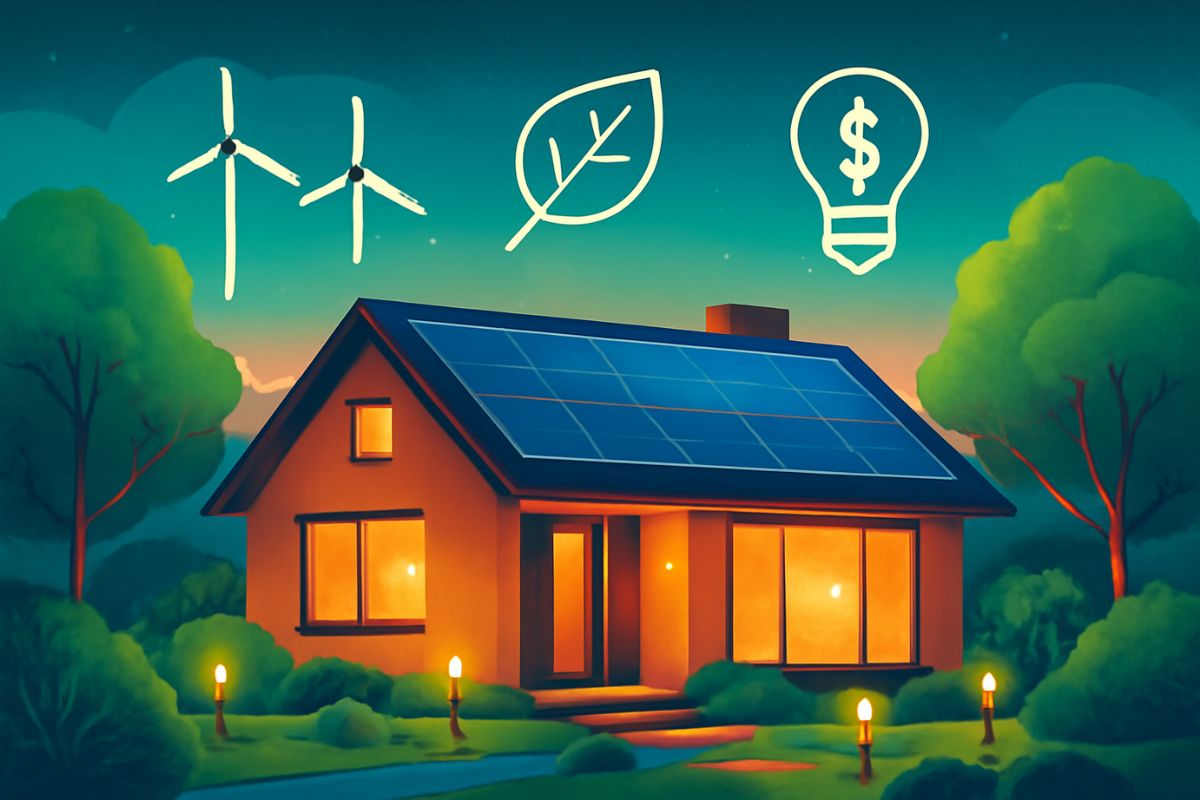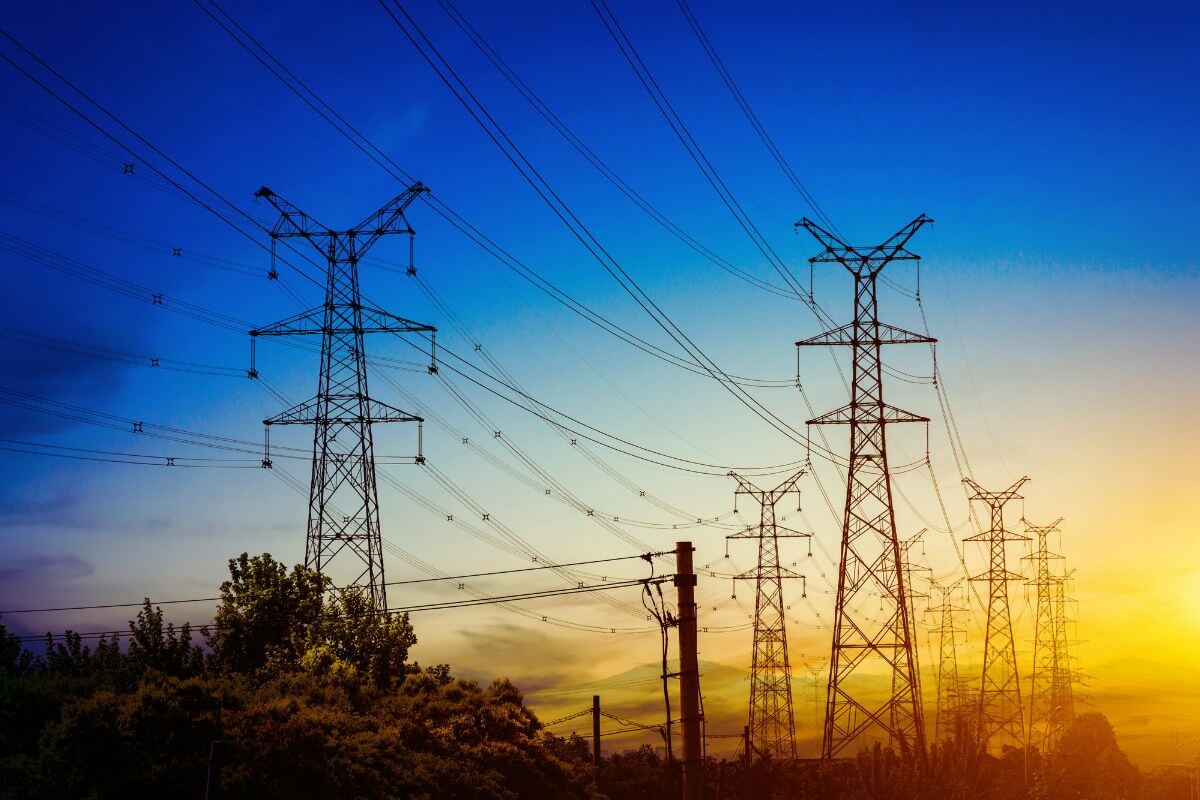How to Make Your Home Energy Efficient: A Complete Guide

- BY Michael
- August 4, 2025
- Read in 7 Minutes
Saving energy at home not only helps the environment but also saves you money in the long run. If you’re wondering how to make your home energy efficient, you are in the right place.
In this easy-to-follow guide, we will explore innovative ways to cut down on energy use, lower utility bills, and make your home more comfortable and sustainable. Whether you’re a homeowner or a renter, these tips are simple, effective, and suitable for everyone, regardless of budget.
Why is Home Energy Efficiency Important?
Energy efficiency means using less energy to do the same task. This reduces waste, saves money, and protects the planet. With rising energy costs and climate change concerns, knowing how to make your home energy efficient is more important than ever for both environmental and financial reasons.
Benefits of Energy Efficiency
- Lower electricity and heating bills, leading to long-term savings
- Reduced carbon footprint and environmental impact
- Improved comfort and indoor air quality in every room
- Increased home value when selling or renting
- Longer lifespan of appliances and home systems
- Better control over monthly expenses
Also Read, How Soon is Too Soon to Move In
How to Make Your Home Energy Efficient
Let’s break it down step-by-step. From lighting to insulation, here are the best ways to improve your home’s energy performance, save money, and reduce environmental impact.
1. Switch to LED Lighting
Traditional incandescent bulbs waste a lot of energy by producing unnecessary heat. LEDs use up to 80% less electricity and last much longer, making them a wise investment.
Why Use LED Lights?
- Use less power and reduce your energy bill
- Produce less heat, keeping rooms cooler
- Last up to 25,000 hours, reducing replacement frequency
- Come in various colours and brightness levels to suit your needs
Quick Tip: Replace bulbs in the most-used rooms first (like the kitchen and living room), then move on to hallways and bathrooms.
2. Seal Doors and Windows
Gaps and cracks around doors and windows allow warm or cool air to escape, leading to higher heating and cooling costs. Proper sealing is a low-cost, high-impact solution.
How to Fix It:
- Install weatherstripping around doors to block drafts
- Use caulk to seal cracks around window frames
- Add door sweeps to the bottom of exterior doors
- Consider thermal curtains for added insulation
3. Upgrade Your Insulation
Insulation helps your home maintain its temperature year-round. It prevents heat loss in winter and keeps cool air inside during summer. Poor insulation is a significant cause of energy waste.
Best Places to Insulate:
- Attic: One of the most significant sources of heat loss
- Walls: Especially in older homes with outdated insulation
- Floors: Helps reduce cold drafts from basements or crawl spaces
Bonus Tip: Use eco-friendly insulation materials like cellulose, recycled denim, or spray foam for sustainability and performance.
4. Use a Programmable Thermostat
A programmable or smart thermostat lets you automatically adjust your home’s temperature based on your schedule, reducing unnecessary heating or cooling.
Benefits:
- Saves energy when you’re not home or asleep
- Keeps your home comfortable with minimal effort
- Can be controlled via smartphone apps for convenience
Example: Set it to reduce heating at night and increase it before you wake up for a cozy morning.
5. Maintain Heating and Cooling Systems
Your HVAC system is a significant energy user. Keeping it in top condition ensures efficiency, comfort, and safety throughout the year.
To-Do List:
- Change filters every 1-3 months to ensure clean airflow
- Schedule yearly professional check-ups to catch issues early
- Clean vents, ducts, and outdoor units for better performance
- Upgrade to an energy-efficient HVAC model when possible
6. Choose Energy-Efficient Appliances
Old and outdated appliances consume more electricity. Upgrading to energy-efficient models can significantly reduce your power usage over time.
Energy-Efficient Appliances:
- Refrigerators with inverter technology
- Front-loading washing machines with eco modes
- Air conditioners with high SEER ratings
- Dishwashers with water-saving features
Pro Tip: Look for the Energy Star label to ensure the appliance meets energy-saving standards.
7. Use Smart Power Strips
Some electronics, like TVs and gaming consoles, draw power even when turned off. These phantom loads can add up over time.
Fix It With Smart Power Strips:
- Turn off multiple devices at once with a single switch
- Automatically shut down unused electronics when not in use
- Save electricity without unplugging everything manually
8. Install Solar Panels
Solar energy is a powerful way to generate electricity and reduce reliance on the grid. Though the upfront cost is high, the long-term savings are impressive.
Advantages:
- Lower electricity bills by producing your own power
- Clean, renewable energy reduces your environmental footprint
- Government rebates and tax incentives can lower the installation cost
- Increases home value and independence from rising utility prices
Note: Solar panels work best on south-facing roofs with little shade. Consult a professional to assess your home’s solar potential.
9. Water Heating Tips
Water heating is the second-largest energy expense in many homes. Small changes can result in significant savings.
Easy Fixes:
- Use low-flow showerheads and faucets to reduce hot water usage
- Set your water heater thermostat to 120°F for safety and savings
- Insulate your water heater tank and pipes to retain heat
- Wash clothes in cold water whenever possible
Also Read, Half of Americans Buys Food Online – Statista Survey
Room-by-Room Energy Efficiency Tips
Make every room in your home more energy-efficient with specific actions.
Kitchen
- Use the microwave or toaster oven instead of the full-size oven when possible
- Keep fridge and freezer seals tight to maintain temperature
- Defrost freezer regularly and keep coils clean
- Run full loads in the dishwasher and use eco mode
Living Room
- Unplug electronics or use smart strips when not in use
- Use curtains or blinds to block out summer heat or keep warmth inside during winter
- Use ceiling fans to improve air circulation and reduce AC usage
- Position furniture away from air vents to allow better airflow
Bedroom
- Add rugs or carpets to reduce heat loss through hardwood or tile floors
- Use thermal or blackout curtains to reduce energy loss through windows
- Switch off lights, fans, and electronics when leaving the room
- Consider using electric blankets or heated mattress pads instead of raising the thermostat
Bathroom
- Fix leaky faucets and showerheads to prevent water and energy waste
- Limit hot water usage with shorter showers
- Use exhaust fans only as needed and turn them off after 20 minutes
- Consider tankless water heaters, for instance, on-demand hot water
Common Mistakes to Avoid
Avoid these common errors to stay on track with your energy-saving goals.
1. Ignoring Air Leaks
Small gaps can cost big money. Always check windows, doors, baseboards, and even electrical outlets for drafts or cold spots.
2. Overusing Heating/Cooling
Set thermostats to a moderate temperature and dress for the season instead of cranking up the heat or AC unnecessarily.
3. Leaving Appliances On
Always turn off or unplug devices you’re not using. Even standby power contributes to higher bills.
Secondary Benefits of Energy Efficiency
Besides saving money and energy, improving your home’s efficiency offers other advantages that impact your health, comfort, and lifestyle.
Healthier Environment
Better air quality and fewer emissions help both your family and the planet breathe easier. Less energy use means cleaner air and water.
Increased Property Value
Energy-efficient homes often sell faster and for more money because they appeal to eco-conscious and budget-minded buyers.
Less Maintenance
Efficient appliances and systems are often newer, more innovative, and more reliable. This means fewer breakdowns and repair costs.
Final Thoughts
You don’t have to do everything at once. Start with small changes like switching to LED bulbs or sealing windows. Over time, you’ll notice a big difference in your energy bills, comfort, and environmental impact.
Remember, learning how to make your home energy efficient isn’t just about saving money. It is a long-term investment in your home, your comfort, and the planet’s future – every action you take counts and brings you closer to a greener lifestyle.




